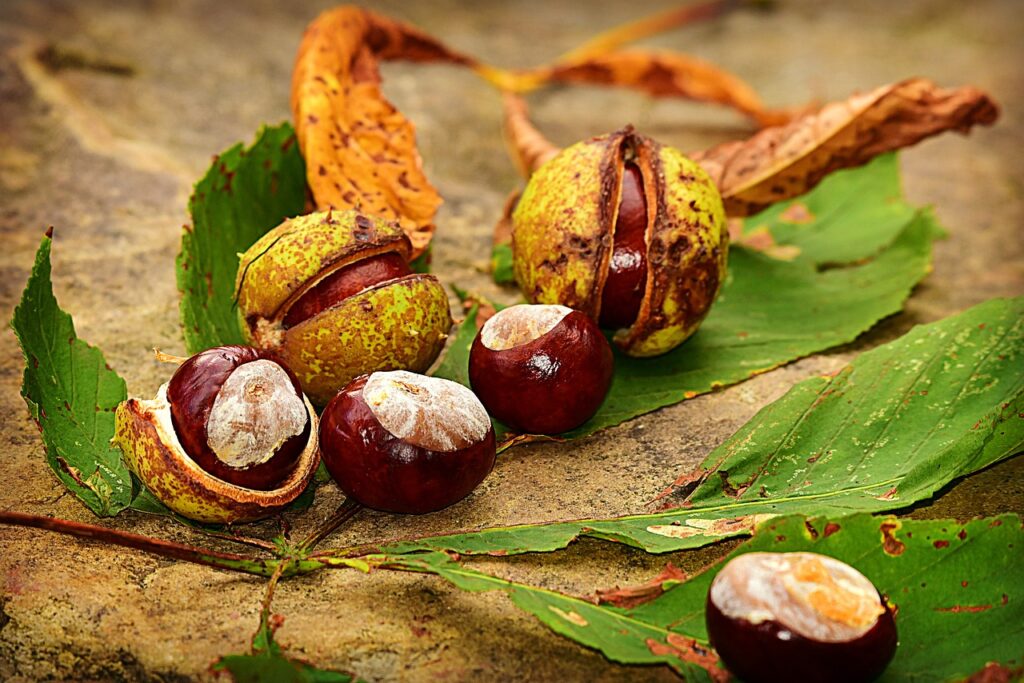Conkers

One of my favourite autumnal memories as a child is climbing the huge horse chestnut tree that sat outside our house and collecting conkers once they’d fallen from this great tree.
Conkers are the shiny, brown seeds of a horse chestnut tree encased in a prickly green cover. By mid-autumn, these conkers fall to the ground and the case often starts to fall away. At this time of the year, children across the United Kingdom collect these conkers ready for The Game – That’s right, we turned it into a competitive albeit quite dangerous tournament in the playground.
Although the exact origins of this game are debated, it’s first known to have been played (in the format we know today) on the Isle of Wight in 1848. Each competitor chooses the conker they want to take to battle. It must be a strong, resilient conker. A small hole is drilled through the centre of the conker and a piece of string of at least 20cm is attached. The game starts by tossing a coin and the winner can decide whether to start by striking or receiving. The two opponents stand opposite each other and the striker has three chances to strike the opposing conker with the aim of smashing it. The competitors take turns with 3 strikes each and the game continues until one of the conkers is completely broken.
The game of conkers is usually a bit of fun for children at this time of the year and they play fast and loose with the rules. However, there are more serious tournaments, including the World Conker Championships in Northamptonshire, where adults carefully prepare all year round to win the title of King Conker.
It’s important to note that conkers can’t be eaten by humans and can actually be poisonous but they’re often consumed by wildlife.
So, the next you’re in the UK in autumn and spot a horse chestnut tree, you may understand why people are sifting through the leaves beneath in search for the perfect conker.



Responses